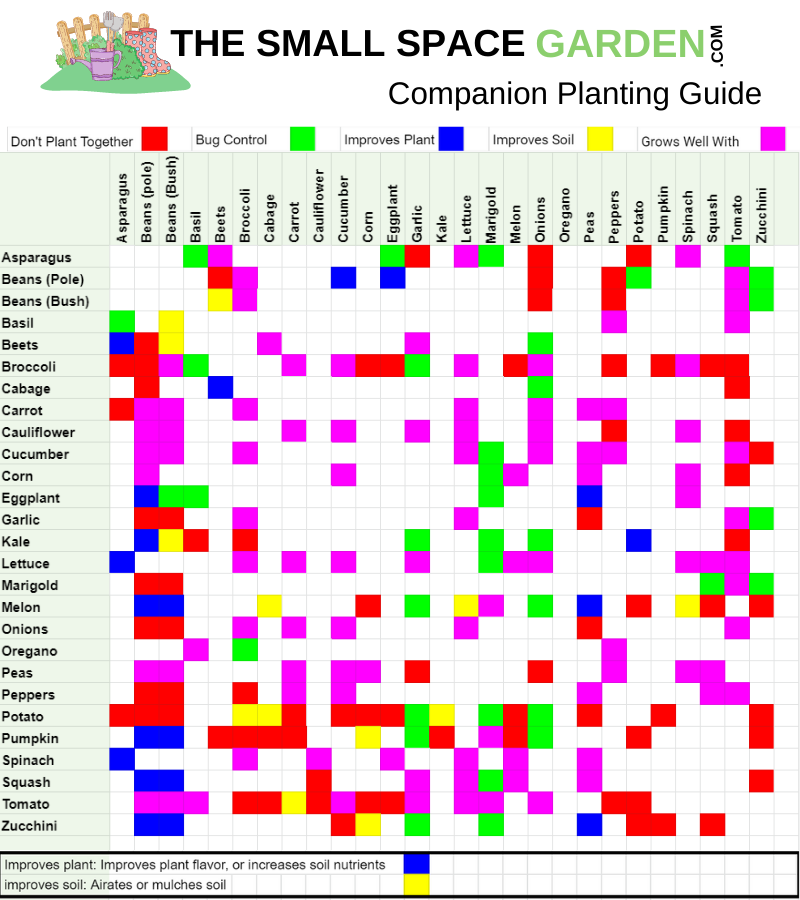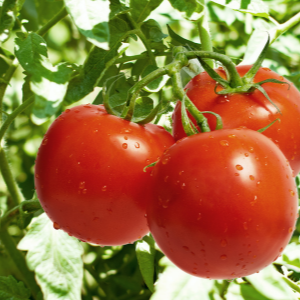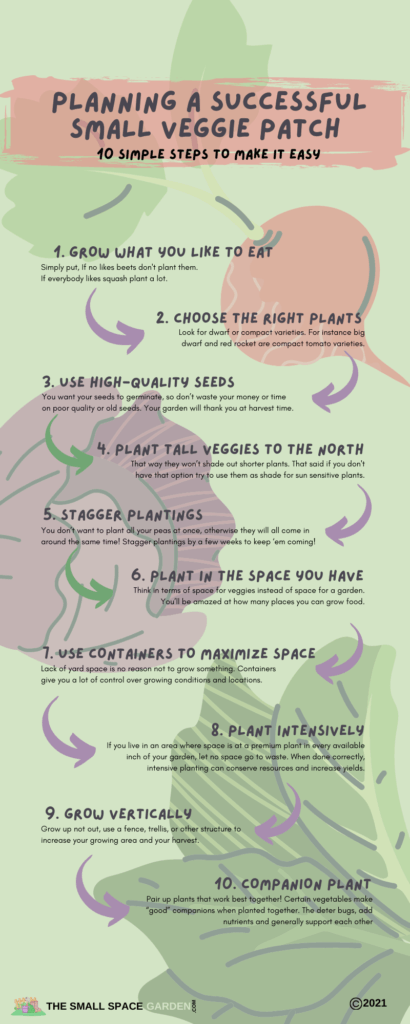Your Best Summer Garden Is Just A Short Read Away
Summer is just around the corner and you’re probably thinking about what to plant in your garden next. We’ve put together this ultimate vegetable garden growing guide for planting and maintaining your small summer vegetable garden (it works for larger gardens as well). This will help you plan the layout of your garden, which vegetables to choose, how much space each needs and when to harvest them.
Let’s face it, gardening is hard work! We made this guide with easy-to-read charts that show exactly what plants grow best together (and why) as well as an infographic with our top 10 tips on planning out a successful small veggie patch no matter where you live or how much time/money/space you have available!
- Your Best Summer Garden Is Just A Short Read Away
- Garden Growing Guide: Plan Your Garden
- When Should You Start Planting?
- Garden Growing Guide Top Tips Infographic
- Get Your Customizable Guide
- What vegetables can be planted in summer?
- Garden Growing GuideSummer Maintenance and Planting Schedule
- Growing Guide Breakdown By Month
- To Sum Up The Summer Garden Growing Guide
For simplicity’s sake we’re using meteorological seasons (so we have hard dates) not astronomical seasons. In case you’re interested here’s the difference . All timing in this post is based on USDA zone 6, so adjust your planting dates accordingly.

Spring runs from March 1 to May 31; summer runs from June 1 to August 31; fall (autumn) runs from September 1 to November 30; and Winter runs from December 1 to February 28 (February 29 in a leap year).
Garden Growing Guide: Plan Your Garden
Right now we’re just going to touch on the basics. If you need more information, you can find it here. If your garden is already built skip down to the next section.
Even if you don’t have a large area in your yard, you can still make a super productive garden that maximizes the space you have. Vegetable gardening at home is a great way to save money and you’ll be happy to know that it is perfectly possible in a very small garden space. So before you head to the nursery, or even look at a shovel, follow these tips for planning, and preparing a successful small garden.
Step1: Find the best spot.
There are 3 very important things your garden will need.
First off you need sun, lots of sun. In all honesty 6 to 8 hours a day (if possible) is pretty much a minimum for fruiting plants. That being said, if you don’t have any place that gets that much sun you can still likely get a decent harvest from non fruiting leafy vegetables.
Secondly you have to have water. With this in mind, unless you live in an area with a LOT of rain do yourself a favor and pick a spot close to a water source. On the other hand if you can’t do that, consider a water barrel with a drip system.
Last but not least, really great soil. Keep in mind not everyone has great soil therefore, don’t stress over this one. you can always improve it. To begin with You can add compost and sand or rotted manure. Not to mention just about any organic matter you can find.
Step 2: Decide how you are planting
Decide if you are planting the ground or in beds or containers.
Are you planting directly in the ground? If so then will you plant in rows, or mounded beds? Either way you need to prepare the soil, and the process is pretty similar. Remove any ground cover, grass, weeds etc. Dig or till at least 12 inches deep, some people recommend deeper (but that’s another post). Add your amendments, compost, aggregate, organic matter, etc. Mix it all together and make your rows or mounds.
If you’re planting in raised beds, There’s a bit more cost involved. Because you have to purchase or build beds, and unless you have a spot to “mine” topsoil, you have to buy both soil and the amendments to go in it, to fill the beds. The trade off here is that once built raised beds can be much easier to maintain.
Need to plant in containers? Then decide where to put them, gather your containers, purchase your soil and start planting. This is probably the easiest way to grow veggies and is great for very limited spaces, or in addition to small raised beds, or in ground gardens.
Step 3: Choose what you want to grow
Grow what you like to eat. That’s the best advice.
Simply put, If no likes beets don’t plant them. Say everybody likes squash, plant a lot. Choose plants that fit a small space. Look for dwarf or compact varieties. For instance big dwarf and red rocket are compact tomato varieties. Use high-quality seeds. You want your seeds to germinate, so don’t waste your money or time on poor quality or old seeds. Your garden will thank you at harvest time.
Step 4: Plan your space
Plant in the space you have. Measure for your garden, and think in terms of space for veggies instead of space for a “garden”. Don’t forget to include areas outside of your garden. You know spaces like that empty fence, the porch railing or that south windowsill. You’ll be amazed at how many places you can grow food.
Draw the arrangement and spacing of crops on a piece of graph paper. Run your rows east to west and keep taller plants to the north. Remember to include the location of any raised beds, containers, or mulch boxes if you have them. Here’s another option: use a simple free garden planner like this one.
Step5: Start planting some vegetables and have fun!
When Should You Start Planting?
As the saying goes, timing is everything—and that’s never more true than when it comes to vegetable gardening. With that in mind, much of your summer garden will have been planted or started in the spring. Thus, aside from planting a few things at the very beginning, and a few things at the end, as a matter of fact most of your time will be taken up with harvesting and maintenance.
Warm season crops (tomatoes, beans, squash, etc) planted in the summer to be harvested in the fall should be planted early enough so they can be harvested before the killing freeze in the fall.
In addition cool season crops (spinach, lettuce, broccoli, etc) don’t grow so good in the summer heat. They do however continue to grow well past the earliest frost in the fall, which means they can be started early enough to mature before hard freezes are expected.
Should You Start Your Summer Garden From Seeds Or Plants
So, the simple answer to this is yes. You should do both. As a general rule, your longer season summer plants should be planted as plants. Things like peppers, eggplant, tomatoes, should go in the ground already growing.
Shorter season veggies like beans, cucumbers, and corn can be sown direct from seed. You can also start the seeds for your fall garden toward the end of the summer season.
Get Your Customizable Guide
The companion planting guide is the perfect tool for maximizing your garden’s productivity. maximize space, control pests and increase soil fertility, with this simple east to use customizable template

What vegetables can be planted in summer?
Here are 5 of the top plants to plant and harvest in the summer: Tomatoes, Eggplant, Pepper, Squash. You can also start the seeds for your fall garden toward the end of the summer season.
Tomatoes:
Tomatoes and the summer garden go hand-in-hand. You almost can’t have one without the other. They need a long growing season. Consequently you want to plant them as early as you can. Tomatoes want plenty of heat and full sun, at least 6 to 8 hours a day.
Tomatoes can be heavy feeders so a little fertilizer will go a long way. For small gardens Better Bush, Bush Beefsteak, Bush Early Girl are good varieties. Rutgers is another good one because it works well for both slicing and sauces
They thrive when planted with marigolds, basil and chives, among other companion plants.

Eggplant:
Much like peppers or tomatoes, eggplants thrive in high temperatures. Even though they love the heat, they need moist cool roots throughout the growing season. That means mulch them heavy to help maintain moisture.
You can grow pretty much any variety of eggplant in a small garden. Now if you’re growing them in containers consider a dwarf variety like, Round mauve, little finger, or casper. These eggplant varieties produce small and tasty fruits in very little space.
Eggplant does well when companion planted with beans, peppers and spinach or thyme.

Peppers:
Keep peppers evenly moist but don’t overwater, to do that water deep and mulch heavy. Peppers like heat but not too much. The hottest days of the year can cause the blossoms to fall off and fruit to sunburn. Here’s a nifty trick in hot weather. Use tomatoes, pole beans or squash to give the fruit just a little shade.
Big garden or small, in the ground or containers, peppers don’t seem to care. There are many different types of peppers you might want to grow in your garden or even in a container. Here’s a few varieties that grow great in containers, Shishito, Poblano, Bulgarian Carrot, Bolivian Rainbow, Devil’s Tongue, Fushimi.
In addition to the tomato and eggplant companion plants, peppers can be planted close to carrots, radishes, squash and members of the Allium family (like onions and garlic).

Squash:
There’s a lot of different squash varieties for you to choose from. Plant them in well-drained soil early from seeds or starts. Look for varieties that have a maturity date of around 60 to 70 days you can stagger plantings into July. Be sure to give them plenty of sun and consistent deep watering.
Planted in hills around 6 ft apart squashes take up quite a bit of space. Therefore they can be tough to fit in a small garden. One way to fit them in is to grow them vertically. Set up a trellis or use a fence, and pick compact vining varieties like these, Chiffon, Gentry, or Green Tiger Hybrid Summer Squashes. For winter squash try, Autumn Acorn, Honey Nut or Vegetable Spaghetti. Or give tiny sugar pumpkins a try.
Squash grows well with cucumbers, corn and beans, among a number of other plants.

Melons:
I know they’re not a vegetable but melons pretty much scream summer. I mean, what says summer more than a red and white checked tablecloth, covered with plates full of BBQ ribs, corn on the cob and big slabs of watermelon?
Melons really like well-drained sandy loam soil. They want full sun and a lot of water (they’re kinda drought sensitive) so keep the soil moist at least until they begin to bear fruit. Like squash, squash melons can take up a bit of space in the garden. If your garden is small, try going vertical and using a small variety like these, Sleeping Beauty, Alvaro, Tigger Melon, or Sugar Baby Bush Watermelon.
There are many different companion plants that will protect melons, including chamomile, marigolds, mint or Lavender.

Garden Growing Guide
Summer Maintenance and Planting Schedule
If you remember this post is based on hardiness zone 6. To find more accurate information for your area the UDA has a great tool here. So around here summer garden season starts around June 1st, and runs through about the end of August.
The bottom line: It’s full speed ahead in the summer garden! Through the next few months, your focus will be on maintenance and harvest. Early on, finish getting any warm-season vegetables into the ground. Direct sow the warm-season crops you plan to grow in place, and continue to thin seedlings you sowed earlier in the year.
Growing Guide Breakdown By Month
June Garden Growing Guide
Maintenance:
- Be on high alert for insect pests and diseases.
- Cover plants with floating row covers or nets to protect from pests and birds.
- Harvest any mature plants from spring and add organic matter harvested beds
- Use mature compost or aged manure to side-dress plants.
- Remove suckers from tomato plants.
Plant:
- Tomatoes, peppers, onion sets and potatoes outside if you have not already.
- Gourds outside.
- Celery outside.
- Continue to direct-seed beans, summer squash and cucumbers.
July Garden Growing Guide
Maintenance:
- Constantly watch for insect pests and diseases.
- Continue to remove suckers from tomato plants.
- Harvest regularly to promote growth.
- Weed often
- Water, water, water, heavy once a week and then as needed.
Plant:
- For late crops of beets, bush beans, carrots, chard, Chinese cabbage, cucumbers, summer squash, and corn.
- Direct sow, cool-season vegetables radish, carrots, beets, turnips, and kale, in late July
- Start Brussel sprouts indoors.
August Garden Growing Guide
Maintenance:
- Be on high alert for insect pests and diseases.
- Weed daily.
- Remove old plants which have stopped producing to eliminate a shelter for insects and disease organisms.
Plant:
- sow seeds for, radish, carrots, beets, turnips, and kale, in early August
- Plant Broccoli and Peas in mid August
- Start cabbage and cauliflower indoors for fall gardens
To Sum Up The Summer Garden Growing Guide
Summer in the garden is all about the harvest and maintenance. Not only that it’s the time to enjoy all those fresh veggies you worked so hard to grow. Much of your garden will have been planted in the spring and there’s still quite a bit you can plant for your summer harvest. What’s more toward the end of the season. It’s time to schedule your fall vegetable planting, so you can enjoy fresh food as long as possible.
To tell the truth there’s quite a bit of maintenance To do in the summer garden. Keep it weeded, watered and clean. Keep an eagle eye out for bugs, pests, and diseases. As one crop finishes up, clean out the bed, add compost and plant your next crop.
I hope you found this post helpful go ahead and share if you did.
Let me know in the comments below what other articles you would like me to write.
Oh and while your here go ahead and download the companion planting guide.
Wakeman
thesmallspacegarden.com


